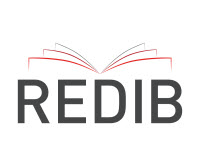La disponibilidad de la semiótica de Peirce: reimaginando la función de la semiosis
Resumen
Peirce identificó frecuentemente su semiótica (o teoría integral de los signos) como una teoría de la representación y, en su disertación (Universidad de Columbia, 1966) y a menudo después, Joseph Ransdell explicó con profundidad y sutileza insuperables la teoría de Peirce desde esta perspectiva. Pero, como apreció Ransdell, Peirce dudaba explícitamente de que la representación fuera lo suficientemente amplia como para abarcar el alcance de su semiótica. Más de una vez propuso mediación como término posiblemente más preciso que representación. En esta ocasión propongo la disponibilidad como una forma de concebir –o reimaginar– la función de la semiosis, en el sentido de Peirce. Esta forma de entender su semiótica podría hacer que el carácter más interno de su proyecto teórico –el alcance integral de su infatigable esfuerzo por instituir una teoría verdaderamente general de la actividad de los signos– esté más disponible de lo que estaría de otro modo. Es decir, podría permitir ver con mayor claridad y claridad lo que se esconde a simple vista.
Descargas
Citas
Austin, J. L. (1962). How To Do Things with Words, ed. J. O. Urmson. Cambridge, MA: Harvard University Press.
Bergman, M. (2007). Representationsim and Presentationism. Transactions of the Charles S. Peirce Society, 43(1), 53-89.
Bernstein, R. J. (2010). The Pragmatic Turn. Malden, MA: Polity Press.
Bernstein, R. J. (1971). Praxis and Action. Philadelphia: University of Pennsylvania Press.
Bernstein, R. J. (1967). John Dewey. NY: Washington Square Press.
Brent, C. (1998). Charles Sanders Peirce: A Life (Revised & Expanded Edition). Bloomington, IN: Indiana University Press.
Buber, M. (1965). Between Man and Man. NY: Collier Books.
Buchler, J. (1961). The Concept of Method. NY: Columbia University Press.
Cavell, S. (2015). Must We Mean What We Say? (Updated Edition). Cambridge: Cambridge University Press. (Original work published 1969)
Colapietro, V. (2023). “Firstness, familiarity, and fluidity: Lucia Santaella as a sign in her own right.” In Harvest Time: Festschrift for Lucia Santaella, ed. Priscila Monteiro Borges and Juliana Rocha Franco.
Daniel-Hughes, Brandon. Pragmatic Inquiry and Religious Communities: Charles Peirce, Signs, and Inhabited Experiments. Cham, Switzerland: Palgrave Macmillan.
Deely, John. (1982). Introducing Semiotics: Its History and Doctrine. Bloomington, IN: Indiana University Press.
Dewey, John. (1925). Experience and Nature. The Later Works of John Dewey, volume 1. Carbondale, IL: SIU Press. Cited as LW 1.
Dewey, John. 1917 (1980). “The Need for a Recovery of Philosophy.” In The Middle Works of John Dewey, volume 10 (Carbondale, IL: SIU Press, 1980), pp. 3-48.
Dewey, John. (1977). The Middle Works of John Dewey, volume 4. Carbondale, IL: SIU Press. Cited as MW 4.
Eco, Umberto. (1976). A Theory of Semiotics. Bloomington, IN: Indiana University Press.
Fisch, Max H. (1986). Peirce, Semeiotic, and Pragmatism. Bloomington, IN: Indiana University Press.
Hampl, Patricia. (2000). I Could Tell You Stories: Sojourns in the Land of Memory. NY: W. W. Norton & Co.
James, William. (1979 (1997)). The Will to Believe and Other Essays. Cambridge, MA: Harvard University Press.
Kenny, Anthony. (1989). The Metaphysics of Mind. Oxford: Oxford University Press.
Langer, Susanne K. (1951). Philosophy in a New Key (Third Edition). Cambridge, MA: Harvard University Press.
Lear, Jonathan. (2022). Imagining the End: Mourning and the Ethical Life. Cambridge, MA: Belknap Press of Harvard University Press.
Nöe, Alva. (2023). Entanglement: How Art and Philosophy Make Us What We Are. Princeton: Princeton University Press.
Nöth, Winfried. (2003). "Crisis of representation?" Semiotica, 43, 1/4, 9-15.
Parmentier, Richard J. (1985). “Signs’ Place In Medias Res: Peirce’s Concept of Semiotic Mediation.” In Semiotic Mediation: Sociocultural and Psychological Perspectives, ed. Elizabeth Mertz and Richard J. Parmentier (Academic Press), pp. 23-48.
Peirce, Charles S. (1998). The Essential Peirce, Volume 2. Selected Philosophical Writings (1893-1913). Edited by Peirce Edition Project. Bloomington: Indiana University Press. This work is quoted thus: EP2, page.
Peirce, Charles S. (1992). The Essential Peirce, Volume 1 Selected Philosophical Writings (1867–1893). Edited by N. Houser and C. J.W. Kloesel. Bloomington: Indiana University Press. This work is quoted thus: EP1, page.
Peirce, Charles S. (1931-1958). The Collected Papers of Charles Sanders Peirce. Vols. I-VIII. C. Hartshorne, P. Weiss and A. W. Burks (Eds.). Cambridge, MA: Harvard University Press.
Peters, James Durham. (1999). Speaking into the Air: A History of the Idea of Communication. Chicago: University of Chicago Press.
Putnam, Hilary. (1981). Reason, Truth and History. Cambridge: Cambridge University Press.
Ransdell, Joseph. (2000). “Peirce and the Socratic Tradition.” Transactions of the Charles S. Peirce Society, 36, 3, pp. 341-56.
Ransdell, Joseph. (1980). “Semiotic and Linguistics.” In The Signifying Animal: The Grammar of Language and Experience, ed. Irmengard Rauch and Gerald F. Carr (Bloomington, IN: Indiana University Press), pp. 135-85.
Ransdell, Joseph. (1966). Charles Peirce: the idea of representation. Ph.D. Dissertation, Columbia University.
Rorty, Richard. (1982). Consequences of Pragmatism. Minneapolis: University of Minnesota Press.
Roth, Michael S. (2023). The Student: A Short History. New Haven: Yale University Press.
Santaella, Lucia. (2003). Why there is there crisis in representation in Peirce. Semiotica, 43, 1/4, 45-52.
Short, T. L. (2007). Peirce’s Theory of Signs. New York: Cambridge University Press.
Short, T. L. (1988). “The Growth of Symbols.” Cruzeiro semiótico (Porto, Portugal), 8, 81-87.
Smith, John E. (1995). Experience and God. NY: Fordham University Press.
Smith, John E. 1981. “Philosophical Interpretation and the Religious Dimension of Experience.” Logos, 2, 5-20.
Stearns, Isabel S. 1952. “Firstness, Secondness, and Thirdness.” In Studies in the Philosophy of Charles Sanders Peirce (First Series), ed. Philip P. Wiener and Frederic H. Young (Cambridge, MA: Harvard University Press), pp. 195-208
Stengers, Isabelle. (2011). Thinking with Whitehead. Cambridge, MA: Harvard University Press.
Wittgenstein, Ludwig. (1958). The Blue and Brown Books. NY: Harper & Row.
Derechos de autor 2024 Vincent Colapietro

Esta obra está bajo licencia internacional Creative Commons Reconocimiento 4.0.







.jpg)




















